Roundwood Timber Framing Course
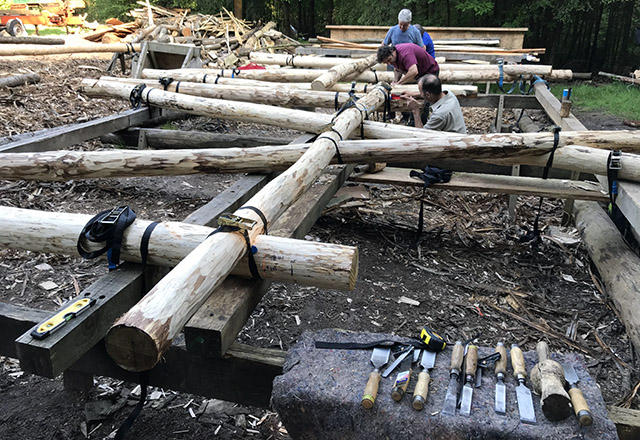
I’ve been interested in building ever since I first volunteered with the disaster relief organisation, All Hands, way back in 2008 in Bangladesh. I was a part of a small team of volunteers there building small shelters for families after Cyclone Sidr wiped out a lot of homes. Over the course of the next three years I followed the organisation around the world as they set up after various disasters and I helped with all sorts of types of work including several building projects.
I’ve never been super skilled with a hammer or a saw but I feel like I have an overall knack for this building thing, I’m pretty good with my hands and making things, and I want to get better plus I really enjoy construction and, after gaining a bit of experience on several structures using a variety of materials, I don’t feel so intimidated with the idea of putting up a building. A foundation, four walls, and a roof… how hard can it be, right?
Well, I guess it can be pretty difficult but I think there’s a lot of common sense to it and I enjoy puzzling things out. I took my first actual building course in 2013 in southern Oregon through the Cog Cottage Company, though it wasn’t exactly sawing and hammering – it was all about mud. This course was my first attempt at natural building and it was love at first mud mix. I’d read The Hand Sculpted House earlier that year and I was totally inspired by this new-to-me way of building and eager to try it out.
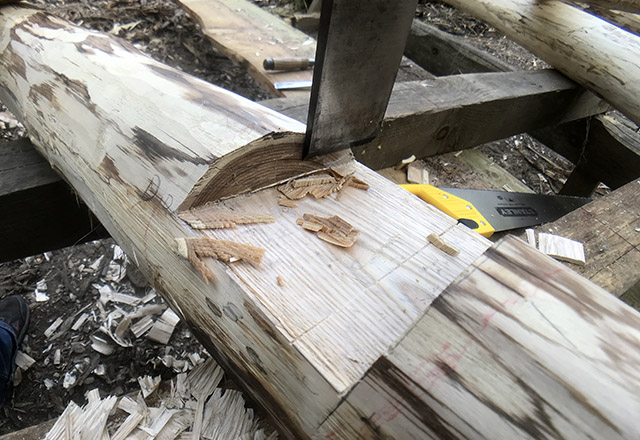
As luck would have it, I found a course organised by the same guy who wrote that book and we were able to take a tour of the house in the book as a part of the course. Seeing a little community of several cob buildings was super inspiring. They’re so free flowing and creative and I left the course inspired and feeling like I could build something for myself using cob. Of course there’s that whole pesky issue of having no land and no money, but this cob course is what planted the seed in my mind that I could build my own house at some point in the future when I got my shit together.
Roll on to 2018… I’ve made the decision to move to Portugal and my plan is to spend the year travelling around to different parts of the country and learning new skills. Since then, my interest has moved on from cob to straw bale houses. I’ve learned that I’d rather build a straw bale house with the walls as infill (rather than as support for the roof) which means that there’s actually a lot more carpentry than one might first expect when they opt for a straw bale house. The bales are actually the least amount of the work and it’s really the foundation and building the wooden (or metal, I suppose) structure including the roof that takes up the most time. Knowing that I’m not carpenter and have no idea to frame up walls and a roof, I wanted to dedicate a lot of my learning this year to this sort of thing.
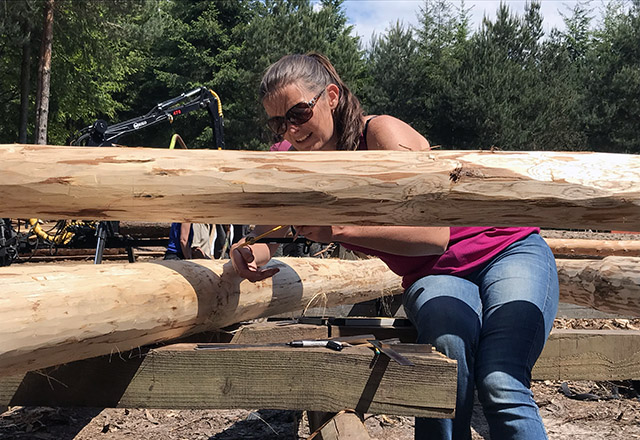
That desire to learn some carpentry is what’s led me to this roundwood timber framing course held by the fine folks at Artizans of Wood in the South Downs National Park in the UK. It’s basically about how to build a house with trees in all of their loggy goodness. Because why do regular timber framing when you can make life harder with round, uneven logs, that’s what I always say! Ok, I’ve never said that but I love the look of frames built with roundwood and I really love the idea of being able to find suitable trees on your own land, fell them and prepare them, and then building with something grown right there (or sourced nearby). I only discovered this was even a thing earlier in the year and I was sort of hooked which led me to searching for a course.
The Artizans of Wood is run by Dylan and Paddy, two guys who love designing, building, and more importantly, the conservation, protection, and maintenance of woodland in the UK. They’re both super nice, very laid back, and know their stuff. I loved their teaching style… they gave us a bit of a lesson and some tips and they were always on hand for questions, but otherwise they just let us get on with it. They’re both extremely passionate, creative, and good at what they do and I felt privileged to be able to learn a bit from them.
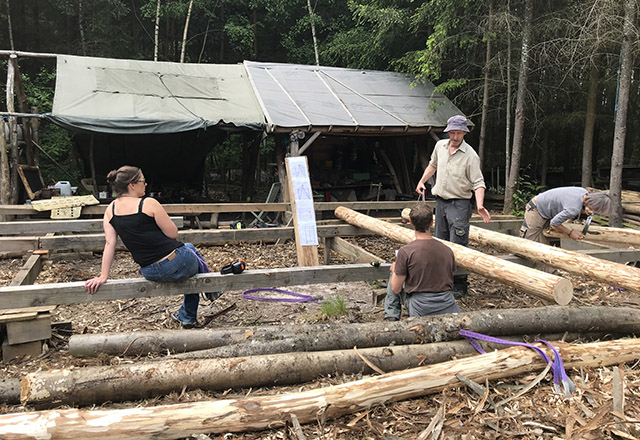
The course was run over four days starting at 9am each morning and finishing up each day whenever the work was done. There’s something very addictive about chiseling and we found that each of us was eager to spend extra time each night working away at our joints. We worked at a relaxed pace and the guys were always on hand to help. This method of building is quite forgiving and even as total beginners we were all able to do our own work with little supervision beyond the initial instruction with is really cool and empowering.
The course costs a pretty hefty £395 including one meal on the opening night along with coffee, tea, and tasty cakes each afternoon. There are cooking facilities, a place to pitch your tent, a solar shower, and a compost toilet. It’s a pretty basic setup that would probably suck if it were raining, but we were lucky to have the sun shining every day except the last.
New Things I Did
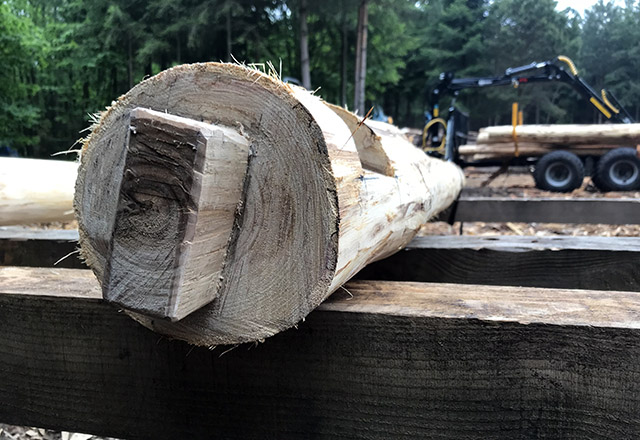
- I’ve worked with roundwood before but I’d never chiseled out joints before taking this course. It’s so fun using the mallet and chisel, carving away the wood bit by bit. It’s such satisfying and addictive work and I love it! Why attach log together with bolts when you can spend hours carving a perfect little joint for them? Another thing I always say.
- I saw, used, and cursed at a scribing tool for the first time. This little tool is used to sort of draw the curves of one log onto the other. It’s tricky to use and a total pain in the ass but I like a challenge! I’d say it’s something that takes some time to master, though we all managed to get the job done and our joints all fit together in the end, so that’s saying something!
- I used a ratchet for the first time, though I have to say that it took some time to get my head around how they work. A guy on my team probably said it best when he claimed to have ‘ratchet dyslexia’ and I’d say I’m also a victim. These simple straps are super handy in general and especially with this type of building.
- We worked as a team to raise up our finished a-frames by hand and this was my first time doing this sort of a wall-raising. It was awesome to experience how a bunch of hands and brute force can raise up a seriously heavy structure without it feeling heavy for anyone in particular.
Things I Want to Copy
- They have a super sweet outdoor kitchen at the spot where we camped and I’d love something similar on my land. I think an outdoor kitchen with a BBQ area makes a nice social space and I really loved the design of their wooden building.
Highlights
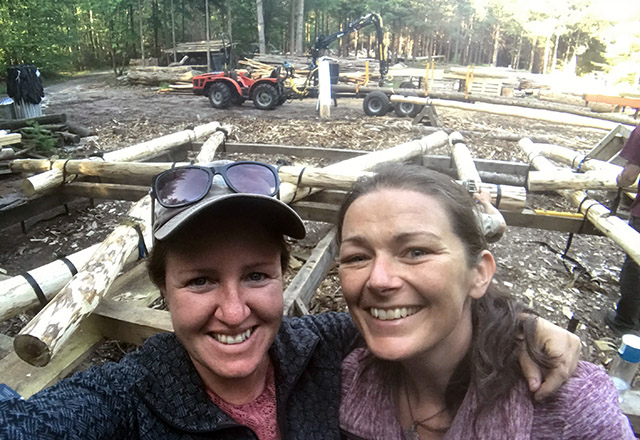
- The best part about this whole experience was that I got to share it with one of my best friends who I hadn’t seen in three years since she shuffled off to the airport after a debauched evening out in Nairobi. She’s a friend from my disaster relief days and is just as interested in this sort of building as I am so it was awesome to catch up over some chiseling.
- The four other people (besides myself and my friend) on this course were all super interesting – a basket weaver and bush craft expert, a diver, a woodland manager and tool maker, and a campsite and pub owner. I really enjoyed talking to each of them and felt like I learned quite a bit beyond what was taught in the course itself which was great.
- Building with roundwood seems to be a forgiving craft and I feel like I learned enough about the basics to be able to have a crack at building my own small structure to start. It’s really cool to leave a course feeling like you have enough of a grasp of the basics to try it yourself but knowing that there’s so much more to learn which keeps things interesting and exciting.
Challenges
- No challenges, really. Maybe the lack of places to charge my phone but, besides losing out on taking some photos here and there and some delayed replies to work emails, it didn’t really effect me. Being out of contact is nice from time to time.
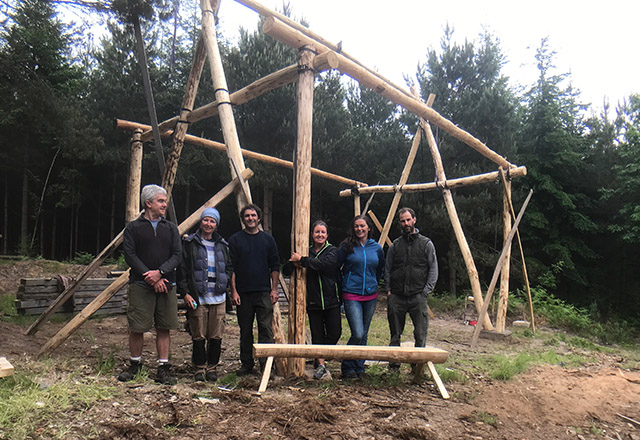
I really loved the four days I spent on this course. I feel like I learned a lot, met some interesting people, saw some beautiful examples of roundwood building, and came away with some new skills. Artizans of Wood is a company I really like run by good people and if you have a chance to take a course with them, or even just to visit, you won’t regret it. Unless you hate chiseling. Then maybe this isn’t the line of work for you. But who hates chiseling?
I’m hanging out with my best friend and her baby in Oxford for the next couple of weeks and enjoying chilling and catching up. I’ll have to sneak away now and then to get some work done, but I’m happy to spend the days going for walks and hanging out. Next up is a two week stint camping again on a building project with a company called Wholewoods where I’ll have a chance to put my newfound mad timber framing skillz into effect. We’ll be 12 strangers camping in the woods for 10 days building a roundwood house… sounds exciting to me!


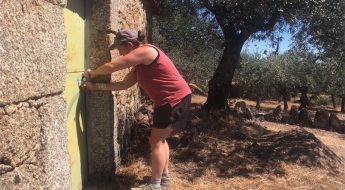
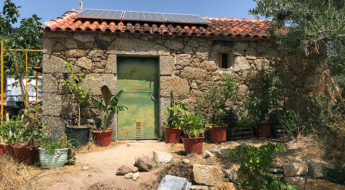
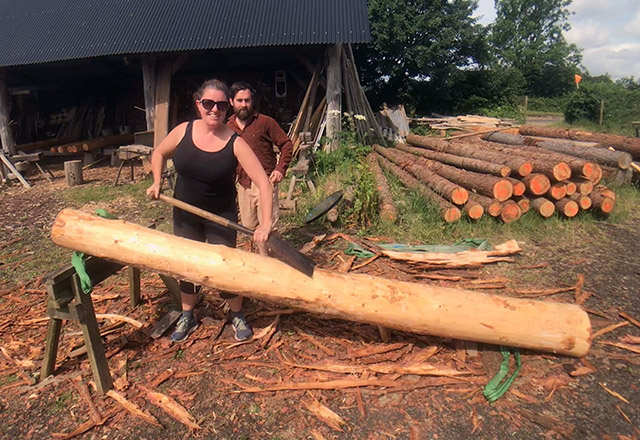
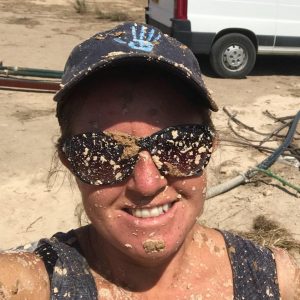
Leave a Comment